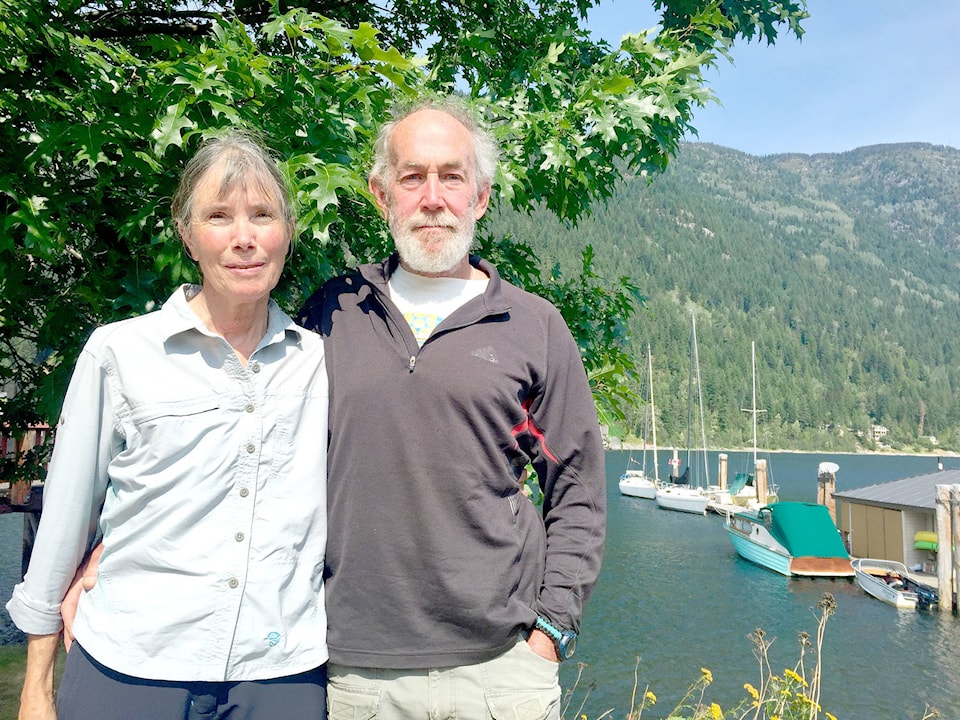“How would you like it if they tried to build a ferry in Lakeside Park?”
That’s the question regional director Andy Davidoff posed to Nelson Mayor Deb Kozak and the rest of the Regional District of Central Kootenay (RDCK) board at the Prestige on Thursday morning, during a lengthy tirade in which he protested plans to construct a new ferry in Glade Regional Park.
That’s one of two potential locations the ferry could be constructed, and its not the one his residents (Area I) voted in favour of during a recent community meeting. But because the Ministry of Transportation believes the other site, North Beach, would necessitate a much longer timeline — at least six months — they’ve decided to go for Glade instead.
Davidoff brought the issue to the table too late for it to be included in the day’s agenda, which caught board chair Karen Hamling and chief administrative officer Stuart Horn off guard. The meeting was briefly adjourned so they could check their information with staff.
In attendance were Glade residents Heather McIntyre and James Derksen, adjacent property owners who were hoping to convince the board to consider the more remote North Beach site. Speaking to the Star during the break, they said they feel left out of the loop.
“Nobody has ever contacted us about using that location as an assembly site. It wasn’t until the beginning of July and there was a community meeting that we found out that was a possibility,” said McIntyre.
“The community took a vote, it was 21 to 27 in favour of the North Beach site, and we felt since the community had spoken our wishes would be followed through — especially because that’s what WaterBridge (Steel Inc.) wanted.”
The construction process will involve transporting large segments of the ferry that have been pre-constructed elsewhere and welding them all together in preparation for launch — which means the residents’ remote haven will suddenly be host to screaming machinery and bustling teams of construction workers.
According to McIntyre and Davidoff, the consultant on the project judged the North Beach site to be preferable. The project managers, however, have ruled it out as an option because it would take too long to get the proper permitting in place. They were originally aiming to begin construction this month.
Davidoff feels residents have been put in an awkward position.
“We’ve had so many issues with the construction of the new ferry ramps. For instance, the temporary ramps were put in at the wrong angle and many Glade residents suffered vehicular damage,” he told the Star after the meeting.
“And the other fact is there are people who are opposed to the new ferry because they wanted a bridge, and others who don’t want a new ferry because they’re afraid that will allow big logging trucks to come in and log their watershed.”
He said it’s a volatile issue for residents, and a deeply emotional one. During his speech to the meeting on Thursday his voice repeatedly broke, and he fought to keep back tears. If residents were going to give their consent to the project going forward, he had a list of demands: thorough remediation after the project is complete, with fire suppression taken into account and more consultation with the neighbours.
“We want a legacy project!” he said. “At the very least give us a legacy project.”
Another potential outcome of going ahead with constructing the ferry at the Glade site is that if they give permission this time around they could end up in the same situation when it comes time to decommission the old ferry — setting a precedent that would end up denying them access to their park for months on end.
McIntyre thinks it could end up being a huge inconvenience for them, taking into account all the vehicles, construction crews and machinery involved.
“There’s already a lot of congestion there. We use that hillside year-round. The community uses it as the main sledding hill, so this will block sledding for this winter, and we’ve had a waterslide on that hill too — we won’t be able to do that,” she said.
“People are saying this needs to be done now, while other people are saying, ‘We have a functioning ferry, why don’t we do this right, somewhere that it doesn’t affect people’s properties in our community?’”
In other words: “there’s no rush.”
“We don’t want this in our regional park, at the foot of our property.”
Before the meeting went to in-camera (a private session excluding the public and the media) on Thursday, the Star spoke with Hamling about Davidoff’s surprise addition to the morning’s agenda. She felt blindsided because she didn’t have the appropriate staff in attendance to address his concerns.
“We’ve had a lot of phone calls into the regional district saying to go on with the project, that they approve it … But the community wanted the other site, the one we can’t access. It seemed when I read the report that the (Glade site) was appropriate, but now we’re listening to discussion.”
When all was said and done, Davidoff felt his voice had been heard. The board ultimately voted in favour of going ahead with construction in Glade Park with Davidoff’s demands being addressed by amendments, and that was a compromise he was comfortable with.
“The meeting was a healthy dialogue of all the issues, and we debated the important points at length, and basically the board made the decision to provide consent to construct the ferry in Glade Regional Park subject to the conditions we brought to the table.”
The new Glade cable ferry will be able to hold nine vehicles, compared to the present eight. The “life cycle” cost is estimated at $19.4 million over 40 years.
It’s expected to be in service by the end of 2018.
